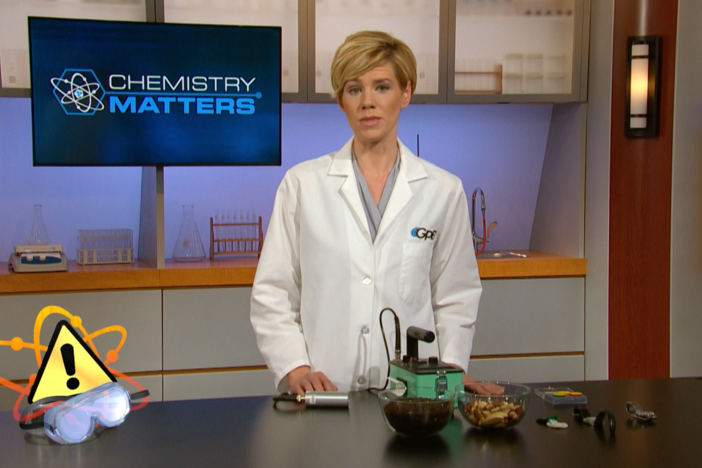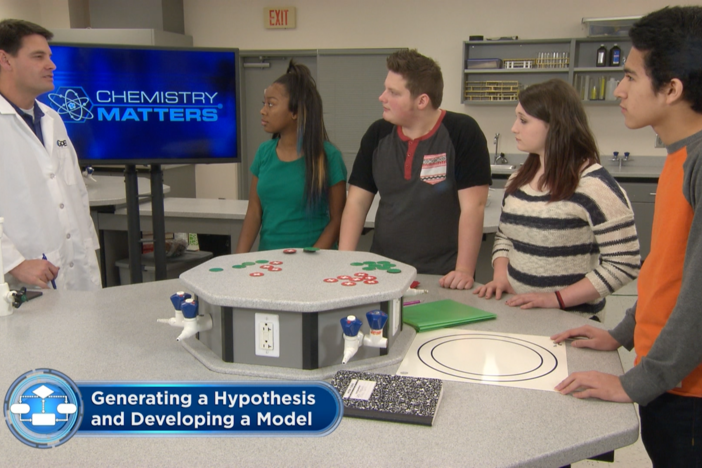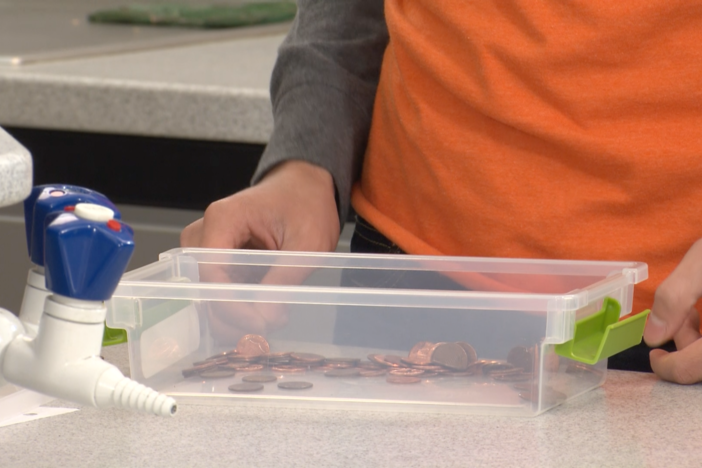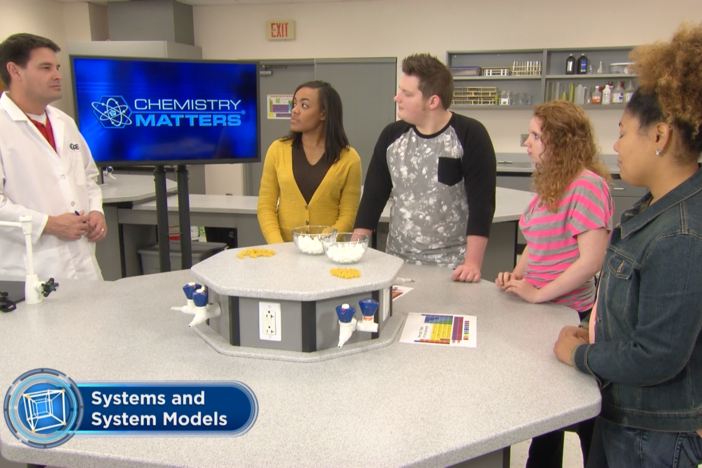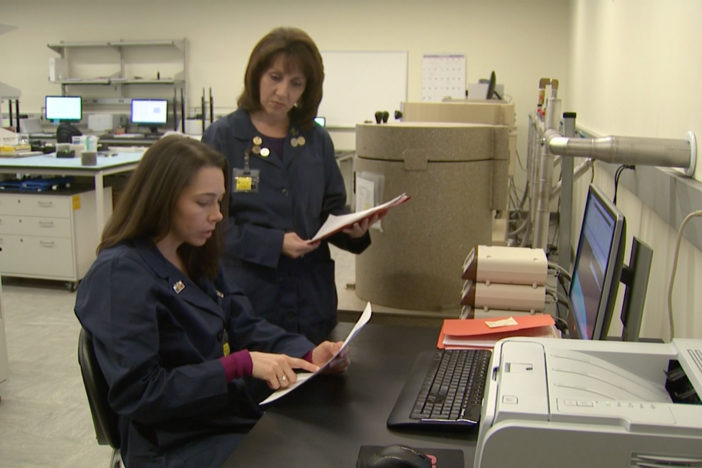Segment D: Nuclear Fusion
This segment explores why some atoms emit radioactive particles, while other do not. We also explore why some elements are radioactive. Our students learn about the immense power of nuclear fusion, which produces the energy from our sun and sustains life, and they participate in a lab activity demonstrating a model of fusion using marshmallows.
Segment D: Nuclear Fusion
This segment explores why some atoms emit radioactive particles, while other do not. We also explore why some elements are radioactive. Our students learn about the immense power of nuclear fusion, which produces the energy from our sun and sustains life, and they participate in a lab activity demonstrating a model of fusion using marshmallows.
Science
Obtain, evaluate, and communicate information about the use of the modern atomic theory and periodic law to explain the characteristics of atoms and elements.
Construct an explanation based on scientific evidence of the production of elements heavier than hydrogen by nuclear fusion.
Obtain, evaluate, and communicate information to explain the changes in nuclear structure as a result of fission, fusion and radioactive decay.
Develop a model that illustrates how the nucleus changes as a result of fission and fusion.
Construct arguments based on evidence about the applications, benefits, and problems of nuclear energy as an alternative energy source.
acid - substances that ionize in solutions to form H^+ ions.
amphoteric - a substance that can be an acid or a base.
Arrhenius Model - in aqueous solutions, acids form hydrogen ions (H^+).
base - substances that ionize in solutions and form OH^- ions.
binary acids - acids that do not contain oxygen in their chemical formula.
boiling point elevation - occurs when the boiling point of a solution is higher than the boiling point of the pure solvent alone.
Bronsted-Lowry Model - this model states that any compound that can transfer a proton to any other compound is an acid, and the compound that accepts the proton is a base.
colligative properties - properties of the solution that are different than those of a pure solvent by itself.
dilution - the process of adding more solvent to a solution.
electrolysis - the decomposition of water.
freezing point depression - a colligative property that describes how the freezing point of a solution is lowered compared to the freezing point of the pure solvent.
heterogeneous mixture - a combination of two or more substances in which the original substances are separated into physically distinct regions with differing properties.
homogeneous mixture - a combination of two or more substances that have uniform composition and chemical properties throughout; also known as a solution.
insoluble - a solid, liquid, or gas that will not dissolve in a particular solvent.
Lewis Model - bases donate pairs of electrons and acids accept pairs of electrons.
mass percent - a way of expressing how concentrated a solution is; is equal to the mass of the solute in a solution divided by the total mass of the solution and multiplying by 100.
mixture - a combination of two or more pure substances in which each pure substance retains its individual chemical properties.
molality - a ratio of moles of solute to the mass of the solvent in kilograms.
molarity - a ratio of moles of solute to the volume of the solution in liters.
oxyacids - acids that contain oxygen in their chemical formula.
pure substance - a material that has a constant composition and has consistent properties throughout the sample.
saturated solution - a solution in which the maximum amount of solute has been dissolved in a given amount of solvent at a particular temperature.
saturation point - the point at which no more solute can be dissolved in the solution at that particular temperature.
solubility - the maximum amount of a substance that can be dissolved in a given quantity of solvent at a given temperature to produce a saturated solution.
solute - the substance that is being dissolved in a solution.
solution - a liquid mixture in which the solute is uniformly distributed within the solvent.
solvent - the substance that is present in a greater amount in a solution.
supersaturated solution - a solution that is holding more dissolved solute than what it normally would hold at that temperature.
The Chemistry Matters teacher toolkit provides instructions and answer keys for labs, experiments, and assignments for all 12 units of study. GPB offers the teacher toolkit at no cost to Georgia educators. Complete and submit this form to request the teacher toolkit. You only need to submit this form one time to get materials for all 12 units of study.
